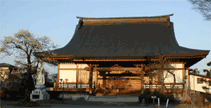  |
|
This page is not meant to be comprehensive. It is merely a brief summary of a few points about Japanese grammar that beginners might find useful. If you have no clue about Japanese grammar, this is the place to start.
In English sentences words are generally placed SVO (subject, verb, object). Ex: The girl eats the apple. The girl is the subject, eats is the verb, and the apple is the object. In Japanese sentences, however, words are generally arranged SOV (subject, object, verb). Ex: Kore wa pen desu. Kore (this) is the subject, desu (is) is the verb, and pen is the object. (The use of wa is explained further down this page.) In general, the beginner can assume Japanese word order to take the form of TTOPV - Topic/Time Object Place Verb. Just a note on translating here. When beginning to study Japanese, people often make the mistake of translating too literally. For example, a person will read 'Pen desu.', which translates in English as 'It is a pen.'. But, the person will translate it as 'Pen it is.' because they don't allow for the change in word order between the languages. It may be hard at first, but please try not to 'cut and paste' between the two languages. That will only be difficult to unlearn later on. Japanese doesn't use any equivalent of a, an, or the. In translating from English to Japanese these can simply be dropped. In translating from Japanese to English be careful to put the correct article back in though. Since Japanese doesn't use them there may be cases where more than one of the articles is OK. For example, the sentence Inu wa koko ni iru. can mean either 'A dog is here.' or 'The dog is here.' Most Japanese nouns do not change form as they can in English. For instance, most nouns (with the exception of nouns referring to people) have no plural form. Thus 'cat' and 'cats' are both the same word neko. There are ways to show there is more than one of something if necessary. There are counters or words like takusan (many/a lot) or samazama (various). Pronouns also don't change form as they do in English. As an example, she, her, and hers indicate the same person. However, in Japanese she, her, and hers are all indicated with the word 'kanojo' and a particle is used to determine which of the English equivalents is being used. Pronouns do usually have a plural form. One of the first things that often throws English speakers when studying Japanese is particles. What is a particle? Well, it's something that the English language doesn't have that Japanese does. Particles help you tell which part of a sentence is which. Particles always follow the word or clause they modify. Particles really have no meaning on their own; they just serve to modify sections of a sentence. (Some particles have a rough equivalent in English if they are of the 'preposition' variety.) One of the most basic mistakes when starting to learn Japanese is to 'translate' the particles. Unfortunately there is often no good English equivalent. (For instance, Japanese uses a spoken question mark.) Thus translating too literally will make the English tend to come out strange. It may be difficult for English speakers who are used to every word having meaning, but try and think of most particles more as 'function' words as opposed to 'meaningful' words. As stated in the nouns section, most words in Japanese do not have a 'plural' form. Instead different types of things have different counters. This is something similar to saying 'five glasses of water' in English. You wouldn't just say 'five water'. The difference with Japanese is that everything requires this type of qualifier. To see some types of counters, see the Counters page. There are several name suffixes that are generally added to the end of names in Japanese. -San is the usual suffix placed after names. It is a respectful term. This suffix is kind of like Ms. or Mr. but it is gender-neutral and makes no reference to marital status. -San should never be used after your own name. -Sama is a more honorific form of -san. This is most often heard in the word okyaku-sama, honored guest/customer. -Chan is a diminutive form of -san. It is usually used after the given name of close friends or younger family members. It is also used after the names of pets. -Kun is a casual suffix. It is usually used after the names of peers in a casual situation. In schools, boys will often be addressed by this suffix. In office situations, higher ups will often address subordinates with this suffix. All of the suffixes can be used for either sex. -San and -sama are also often used after titles in addition to names. The example of okyaku-sama is given above. |